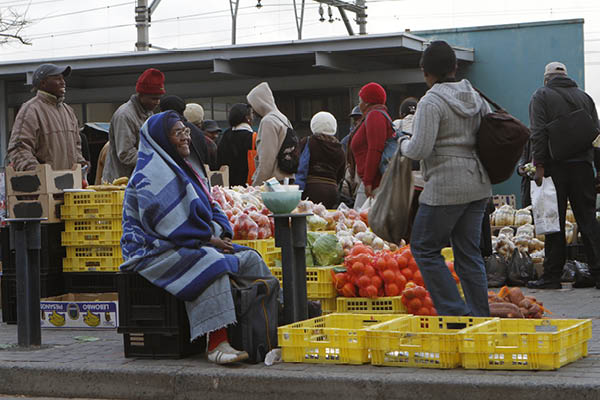Research Brief
Supermarkets and regional growth in Southern Africa
Supermarkets are potential partners in regional industrial development and should be considered in future policy making
While the growth of supermarkets in the region has improved competitive pricing and accessibility to a broader range of products and services, it has also imposed challenges
Obstacles to entering supermarkets’ supply chains include meeting supermarkets’ standards in terms of costs, quality, packaging, delivery schedules and quantities
Entry into supermarkets requires upgrading for many local producers, which may in turn also help suppliers export
Supermarkets in Southern Africa have undergone significant growth in recent years. Some countries continue to import large amounts of food and related products into stores. At the same time, local suppliers in the region face challenges in becoming supermarket suppliers. Their entry into supermarkets holds potential for exporting and, as such, would encourage regional growth.
Supermarket growth across region
Countries in the South African Development Community (SADC) have experienced strong growth in the number and spread of supermarkets over the past two decades. South African supermarkets, led by the two main chains, Shoprite and Pick n Pay, have rapidly spread across the region. While growth has been rapid, the number of stores in other SADC countries is still small compared to the number in South Africa, suggesting that expansion may still be underway.

Shifting target markets
As their reach expands, supermarkets are also segmenting their target market. They have moved away from serving the traditional high-end affluent consumers in urban areas and are now successfully accessing new markets in lower income communities. The diversity of offerings has increased, with wholesalers extending into retail as well as independent supermarkets receiving support from buying groups for purchasing and logistics.

Key to exporting
SADC countries—with the exception of South Africa—import a large proportion of the processed and packaged food products sold in their supermarkets. For example, it is estimated that more than 80% of supermarket products sold in Zambia are imported, with the main source country being South Africa. This presents significant opportunities for local suppliers to displace imported products on supermarket shelves. However, supplying supermarkets means meeting the private standards of supermarket chains and their requirements in terms of costs, quality, packaging, delivery schedules, and quantities. These require significant investments in plants and capabilities. Obstacles also include payments for shelf space and, in some instances, long payment periods.
Once a supplier meets these standards, sales to supermarkets in one country brings the potential to export to other countries in the region via the supermarket distribution system. Hence, while entry is challenging, the rewards to successful suppliers are potentially large. Initiatives to support local procurement by supermarkets can increase regional trade.
A regional code of conduct would help ensure that retail space is open, shelf space is available to smaller brands, and anti-competitive arrangements are not employed to restrict rivalry
Supplier development initiatives would give supermarkets a critical role in fostering local supplier capabilities in order to meet concrete targets for local and regional sourcing
In countries such as Zambia, soft interventions such as commitments to local procurement have induced supermarkets to increase local sourcing of dairy, processed grains, edible oil and household products over the last five years. Regional codes of conduct as well as supplier development initiatives would help encourage the use of local suppliers, potentially providing an avenue for substantial expansion of regional trade.
 Join the network
Join the network